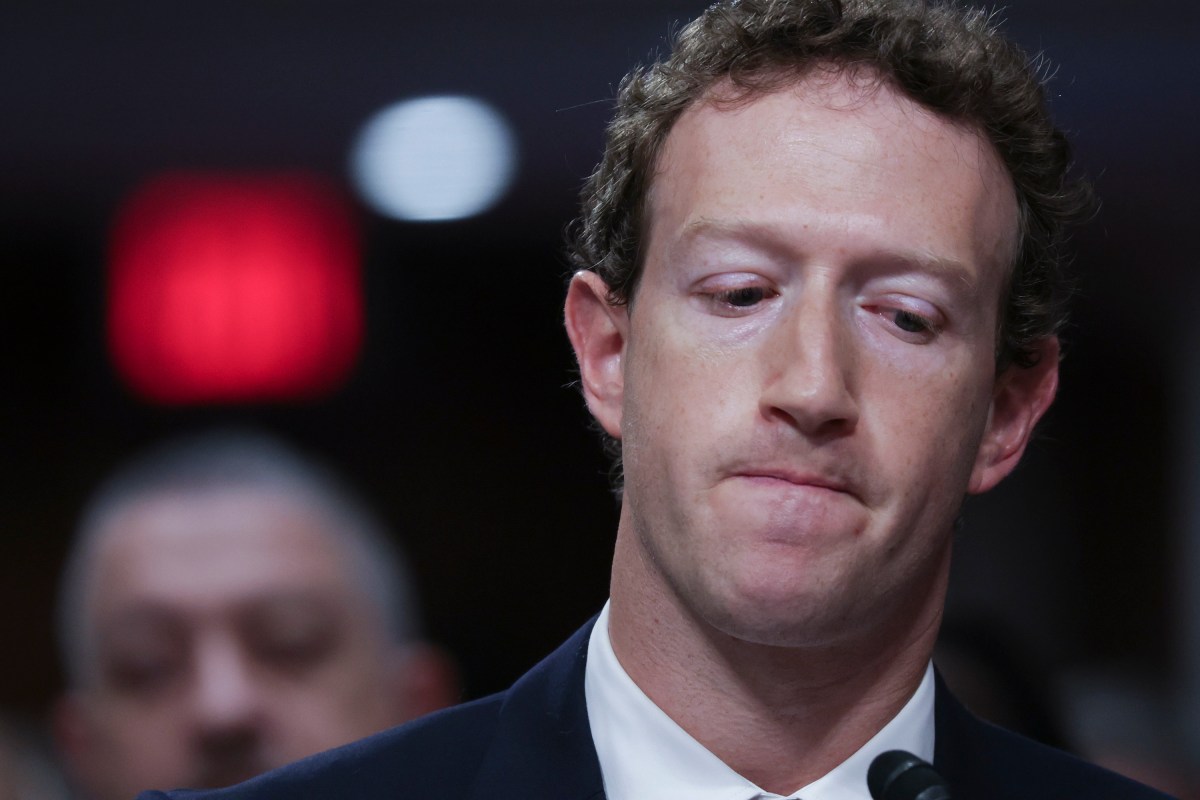Employees are sick of surveys. Here’s the ultimate guide for how to fix them
Back in 1996, employment lawyer Karen Michael was added to a new case. Several women were suing their employer, her client, after being sexually harassed by one of their coworkers. The women had expressed their grievances through the company’s workplace survey, but the company had failed to notice. “They did nothing with that information,” Michael remembers. “I had to look at all of these surveys and, sure enough, there it was. Multiple women had commented they were being sexually harassed by this man, and under federal law, that’s notice.” She wondered, how could all these alarming survey responses have been so blatantly ignored? The case inspired Michael to take a public stance against unreviewed workplace surveys. Flash-forward to May 15, 2024, and Michael posted a video of herself discussing the topic to TikTok. “Do not do an employee survey, if you’re going to do nothing with the information you get,” she laments. Today, the video has 2.8 million views and the comment section is full of survey horror stories. This is perhaps because employee surveys have become incredibly common in today’s workforce. In 2019, 74% of firms used large-scale employee surveys to sense worker engagement, per Gartner. But employees are often unimpressed: many have reported worries about anonymity, feelings that their responses won’t be heard out, and frustrations with poor survey design. And with worker happiness and worker satisfaction at record-low levels, it appears that employee surveys are failing to address some of the most pressing issues facing workers. The employee survey needs at minimum, a facelift; and at most, a revamp. So Fast Company spoke with experts—including those who are pro- and anti-employee surveys—about how to fix the process. Why use an employee survey? Some HR experts believe we should abolish the practice of conducting employee surveys entirely, and instead should refocus HR efforts. Michael herself favors a “culture assessment” style in which HR leaders conduct one-on-one check-in interviews with employees. But others maintain that employee surveys are still valuable. Indeed, few other tools allow firms to sum and analyze employee sentiments at such scale. Frank Giampetro oversees the employee experience at EY in his position as the Americas Chief Wellbeing Officer. His domain is expansive: EY touts 57,000 employees in the United States alone. Three “pulse surveys” a year are Giampetro’s best way to gain insight into the company’s culture. “We have a really diverse workforce,” says Giampetro. “At the aggregate level, we’ll get some insights. But where we get a lot of rich insights is drilling down and understanding what’s happening for different demographic groups.” In the process of administering these employee surveys, Giampetro says he has learned things about the employee experience he likely wouldn’t have know otherwise. For instance, some respondents recently claimed that EY’s learning program mandates felt like a compliance exercise. Giampetro and his team responded to this feedback and changed the company policy so that mandatory learning sessions were considered to be billable hours, allowing employees to enrich themselves while getting paid. This represents a crucial step in successful employee surveying—responding to the results with action. According to a Quantum Workplace study, 67% of employees believe their organization fell short in addressing survey concerns. For a survey to be effective, its data needs to spark change. Corona Pritchard, a partner at management coaching consultancy Haven Human Assets Ventures, is fundamentally pro-survey. Over the past 10 years of her career, she has led internal employee surveys within large organizations, and now consults with other companies about how to successfully survey employees. She says she often sees employers fumble the process. “We’ve had a flip-flopping of priorities, where organizations think they have an employee engagement strategy because they have a survey effort, versus having a strategy that the survey helps them measure,” Pritchard says. “We’ve really put the survey out front, and surveys are inherently limited.” Surveys are a tool, not a result, she explains. Still, Pritchard believes most employers are not intentionally trying to ignore what employees want. Indeed, she has spent hours and hours combing through employee survey data with leadership teams. The issue, Pritchard argues, is that employee surveys often aren’t effective enough at collecting actionable plans for changing employee experiences. Typically, they show how employees feel, but not necessarily what to do about it. Instead, leaders should use employee surveys as “a launch pad” to generate a “rich dialog,” says Pritchard. She emphasizes that many leaders waste time trying to analyze employee survey results, rather than simply asking employees follow up questions. How to create a good employee surve

Back in 1996, employment lawyer Karen Michael was added to a new case. Several women were suing their employer, her client, after being sexually harassed by one of their coworkers. The women had expressed their grievances through the company’s workplace survey, but the company had failed to notice.
“They did nothing with that information,” Michael remembers. “I had to look at all of these surveys and, sure enough, there it was. Multiple women had commented they were being sexually harassed by this man, and under federal law, that’s notice.”
She wondered, how could all these alarming survey responses have been so blatantly ignored? The case inspired Michael to take a public stance against unreviewed workplace surveys.
Flash-forward to May 15, 2024, and Michael posted a video of herself discussing the topic to TikTok. “Do not do an employee survey, if you’re going to do nothing with the information you get,” she laments. Today, the video has 2.8 million views and the comment section is full of survey horror stories.
This is perhaps because employee surveys have become incredibly common in today’s workforce. In 2019, 74% of firms used large-scale employee surveys to sense worker engagement, per Gartner. But employees are often unimpressed: many have reported worries about anonymity, feelings that their responses won’t be heard out, and frustrations with poor survey design. And with worker happiness and worker satisfaction at record-low levels, it appears that employee surveys are failing to address some of the most pressing issues facing workers.
The employee survey needs at minimum, a facelift; and at most, a revamp. So Fast Company spoke with experts—including those who are pro- and anti-employee surveys—about how to fix the process.
Why use an employee survey?
Some HR experts believe we should abolish the practice of conducting employee surveys entirely, and instead should refocus HR efforts. Michael herself favors a “culture assessment” style in which HR leaders conduct one-on-one check-in interviews with employees. But others maintain that employee surveys are still valuable. Indeed, few other tools allow firms to sum and analyze employee sentiments at such scale.
Frank Giampetro oversees the employee experience at EY in his position as the Americas Chief Wellbeing Officer. His domain is expansive: EY touts 57,000 employees in the United States alone. Three “pulse surveys” a year are Giampetro’s best way to gain insight into the company’s culture.
“We have a really diverse workforce,” says Giampetro. “At the aggregate level, we’ll get some insights. But where we get a lot of rich insights is drilling down and understanding what’s happening for different demographic groups.”
In the process of administering these employee surveys, Giampetro says he has learned things about the employee experience he likely wouldn’t have know otherwise. For instance, some respondents recently claimed that EY’s learning program mandates felt like a compliance exercise. Giampetro and his team responded to this feedback and changed the company policy so that mandatory learning sessions were considered to be billable hours, allowing employees to enrich themselves while getting paid.
This represents a crucial step in successful employee surveying—responding to the results with action. According to a Quantum Workplace study, 67% of employees believe their organization fell short in addressing survey concerns. For a survey to be effective, its data needs to spark change.
Corona Pritchard, a partner at management coaching consultancy Haven Human Assets Ventures, is fundamentally pro-survey. Over the past 10 years of her career, she has led internal employee surveys within large organizations, and now consults with other companies about how to successfully survey employees. She says she often sees employers fumble the process.
“We’ve had a flip-flopping of priorities, where organizations think they have an employee engagement strategy because they have a survey effort, versus having a strategy that the survey helps them measure,” Pritchard says. “We’ve really put the survey out front, and surveys are inherently limited.”
Surveys are a tool, not a result, she explains.
Still, Pritchard believes most employers are not intentionally trying to ignore what employees want. Indeed, she has spent hours and hours combing through employee survey data with leadership teams. The issue, Pritchard argues, is that employee surveys often aren’t effective enough at collecting actionable plans for changing employee experiences. Typically, they show how employees feel, but not necessarily what to do about it.
Instead, leaders should use employee surveys as “a launch pad” to generate a “rich dialog,” says Pritchard. She emphasizes that many leaders waste time trying to analyze employee survey results, rather than simply asking employees follow up questions.
How to create a good employee survey
Crafting a good employee survey is no small feat. Should you keep the survey short or ask about more workplace topics? Should you include yes/no or open-ended questions? Should you ask all employees the same questions or tailor surveys for smaller teams?
When asked about the backbone of a good survey, Meredith Wells Lepley, principal of consultancy Workplace Surveys and Solutions, laughs. She says she could talk about employee survey logistics for hours. In fact, she teaches a whole course about it at the University of Southern California. Still, Wells Lepley walks me through the necessary pieces for an effective workplace poll. Like an essay, it starts with a hook.
“The ideal survey has a very engaging and compelling introduction that grabs the employee’s attention,” says Wells Lepley. “What’s in it for me? Why should I fill this out?”
She also emphasizes that there is an art to how you order the questions. The easy questions should come first, per Wells Lepley’s guidance. Then, come the more difficult questions. And finally the open-ended questions. Wells Lepley has a rule that surveys should have a maximum of three free-response questions. Employees would “rather just click,” she says.
Michael, on the other hand, does not typically recommend that surveys include any open-response questions. “Unless you’ve got 10 employees, you’re not going to read all those [responses] and do something with them,” she says. Instead, Michael recommends that each survey include “an immediate link to an appointment with a Human Resources person so that you can meet with them to discuss your concerns.”
Perhaps the biggest debate amongst workplace pollsters is about how to best protect employee’s privacy. Many employee surveys claim to prioritize anonymity, so that workers can feel compelled to share more sensitive information. But employees often question how anonymous they truly are. Can’t a boss decode who the respondent is based on their written responses? Or from their demographics? These fears have led others to suggest that survey responses be advertised as confidential, as opposed to entirely anonymous.
Christopher Rotolo, an adjunct professor at New York University who’s made surveys for companies such as PepsiCo and IBM, suggests that workers’ fears about anonymity have risen as it has become easier for employers to create surveys in-house. Fewer and fewer companies are hiring a third-party to administer employee surveys and new tools make it easier for teams to throw together surveys internally. Why should employees trust that their own bosses won’t know who wrote what?
“When companies are doing their own surveys, they can’t claim anonymity,” Rotolo says. “When we used to do that, we’d get a lot of hourly workers stating they made over $100,000 a year. They would not [answer] those questions truthfully. There’s always a general level of skepticism on the anonymity of the data.”
Wells Lepley validates these fears: She’s heard stories of a company that completed its survey in-house, dug up who submitted an answer they didn’t like, and fired the employee. This leads her to the conclusion that effective surveys can only be given by third-parties.
“If it comes from an outside consultancy, and they’re promised anonymity, then you’re going to get more accurate data,” Wells Lepley says. “If you’re not going to get accurate data, then why on earth are you doing it?”
What to do after you have surveyed employees
Writing and distributing a good survey is only half the battle. Then, the company needs to go through the submissions and make sure workers’ needs are addressed. Frequently, this second step doesn’t occur, which influences employee’s trust in the process. A LeadershipIQ poll found that only 42% of employers are prepared to take action on every question asked in their surveys.
Michael says this was the case when she worked in HR at SunTrust Bank. As she remembers it, the team decided to initiate an engagement survey and they paid lots of money for a consultant to come in and administer the poll. When the survey was completed, Michael and her team received a heap of graphs and data to weed through.
“You know what we did with that? Absolutely nothing,” Michael says. “Employers have really good intentions, but because the information is vague as a tarot card and not actionable, the value does not equate to the ask.”
Many firms are grossly unprepared to handle the amount of data they will receive from an employee survey, says Michael. And even if they can parse through the charts and free-responses, building an action plan can be even harder.
Wells Lepley says that the best survey experience she’s had was with a company who had been administering them for decades. The company had the process down to a science, and had incorporated analyzing and addressing survey responses into their HR operations.
Rotolo calls this a “closed loop system.” He says the best employee surveys follow a strict timeline: Collect the responses, analyze the data, make necessary changes, and eventually begin a new survey to see if the company’s response is having the desired impact. As this process repeats itself, workers’ concerns should be addressed directly and progress should be consistently made.
Given the level of skepticism surrounding employee surveys, it’s also crucial for leaders to highlight the changes they’ve made. At EY, Giampetro has confidence that his surveys are effective. Still, he embraces a culture of transparency so that the respondents can see, in live time, him addressing their needs.
“We’re going to play back the results, whether we like those results or not, because sometimes they’re not as positive as we’d like them to be,” Giampetro says. “[We] continue to play back whether we’re actually improving on them or not.”
Ultimately, collecting accurate data is all about trust: Employees need to trust that their managers won’t sell them out, won’t overburden them with exorbitant questions, and won’t leave their complaints unanswered. Asking questions is just the beginning.






















